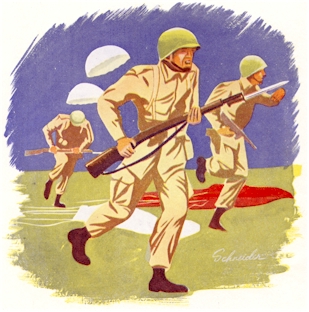
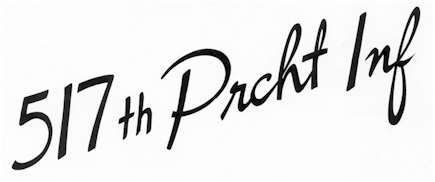

THIS fine book is not only the answer to the soldier's desire for a souvenir, but also a treasure house containing the narrative of the operations and travels of the 517th Parachute Infantry Regiment, from its activation till its return from overseas. All of this is supported by many fine pictures and sketches, that enable one to have a graphic account of the operations of each unit in the Regiment.
There is, at the present time, a tendency to wish to forget about the war, and everything connected with it. The interest in the battle records of the units participating in World War II will renew with the passing of the years however, and this book will become of increasing value and importance.
I know that I shall hold this book in high regard, and have it continually on display in the living room of my home as a constant reminder of old acquaintances, scenes, and experiences.
 |
|
|
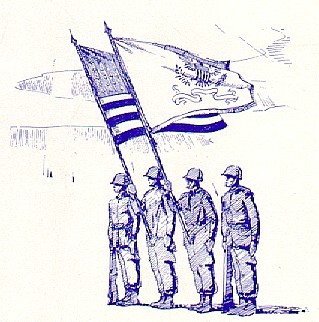
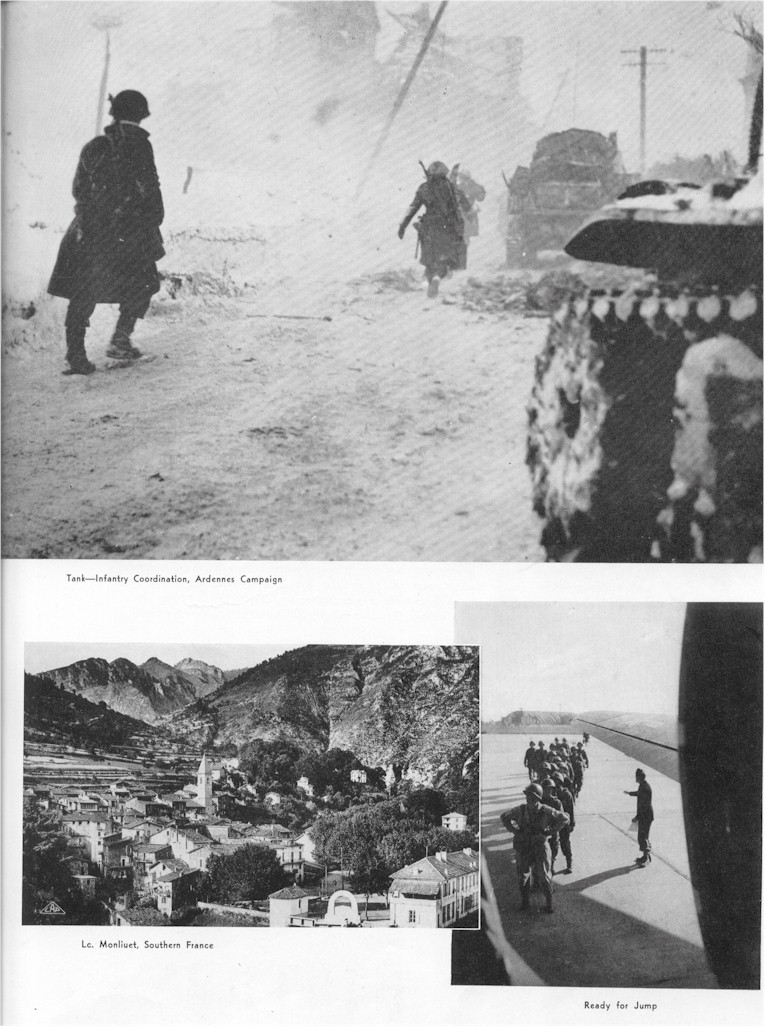
THE HISTORY OF THE 517th PARACHUTE INFANTRY REGIMENT
THE 517th Parachute Infantry. Regiment was presented its colors and officially activated under the command of Colonel Louis A. Walsh, Jr., on the Fifteenth of March, 1943, at Toccoa, Georgia. During the next two years, this Regiment, the youngest in the United States Army, was to blaze a trail through basic training, The Parachute School, Tennessee Maneuvers, and on to the ultimate proving grounds on the Battle Fields of Europe. Campaigns were fought in Italy, France, Belgium, and Germany, and the 517th achieved outstanding success in all of them.
The Regiment was alerted for overseas shipment while on Tennessee Maneuvers, and ordered back to Camp Mackall for its final preparations. It was then that Colonel Rupert D. Graves assumed command of the 517th, and a Combat Team was formed by the attachment to the Regiment of the 460th Parachute Field Artillery Battalion and the 596 Airborne Engineer Company.
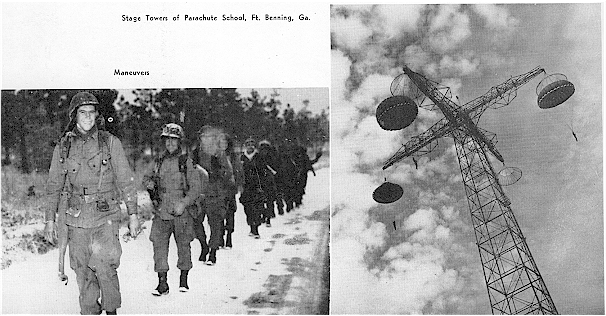
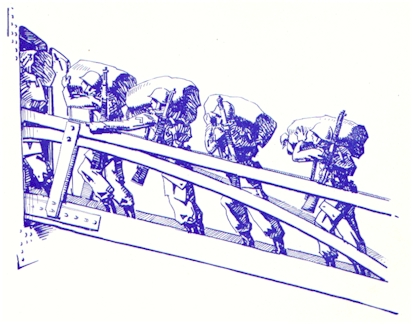
THE Combat Team sailed from Newport News, Virginia, on the seventeenth of May, 1944, on the U. S. S. Santa Rosa, a converted luxury-liner. The Special Service Section and three detachments of WACs on board did much to alleviate the monotony of the trip and provided many forms of amusement for the entire Command.
Two weeks after sailing, on the 31st of May, 1944, the ship arrived at the beautiful, but war-torn city of Naples. The voyage by sea was over, but the eve of battle was near.
After the debarkation, a bivouac was established in an extinct volcano crater, equipment was made ready, sea-legs worked out, training conducted, and time was allotted for the all important passes to the near-by points of interest.
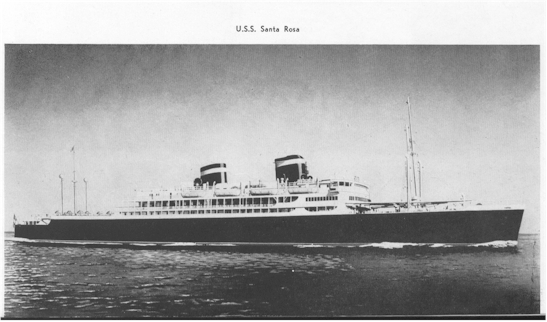
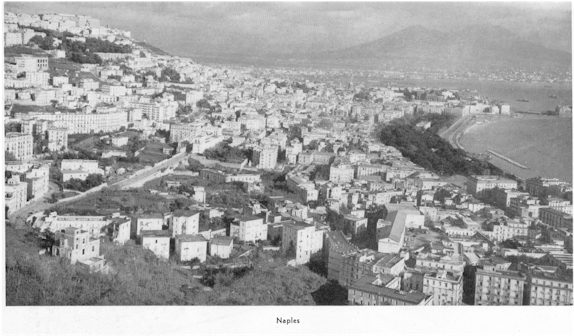
Camp was broken on the fourteenth of June; and the Regiment boarded LSTs for the trip to Civitavecchia, and combat, with the 36th Division. On the morning of June 18, 1944, men of "B" Company, acting as an advance guard, rounded a corner to be met by a blast of enemy machine gun fire. The first of many battles for the 517th had commenced.
The First Battalion, commanded by Major William J. Boyle, was the leading element for the combat team, with "B" Company furnishing the advance guard. The long months of training paid off when fighting began; and although the actions were usually severe, the men were always able to overcome the opposition and push on to their objective.
When the fighting commenced, the Second Battalion under the command of Lieutenant Colonel Richard J. Sietz moved around to the right flank, forcing the Germans to withdraw; but not before heavy casualties had been inflicted on them.
The 5l7th pushed on rapidly to prevent the reorganization of the enemies' defenses. The Second Battalion moved on Montesaio, and took it on the evening of June 19th. Lieutenant Colonel Melvin Zais's Third Battalion moved to the left and pushed through Montepescali to take Sticciano the night of June 20th, which was spent below the village in consolidated positions against counter attack.
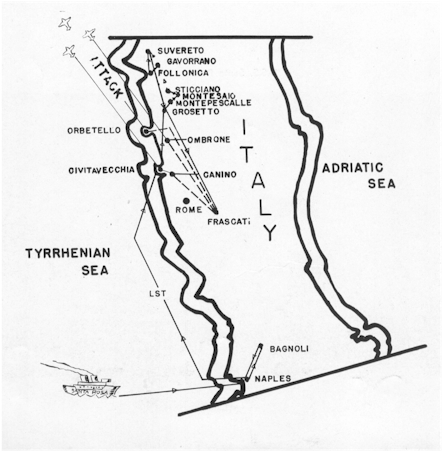
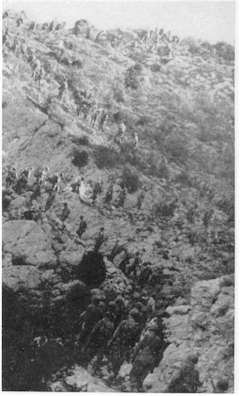 The following day the Combat Team moved out in the rear of the 142nd Infantry to a
position east of Follonica. On the morning of the twenty-fourth the Second
Battalion struck to the left, and moved through the northeast section of
Follonica, where it encountered heavy enemy resistance. Overcoming this, they
pushed on and took the dominating ground to the front.
The following day the Combat Team moved out in the rear of the 142nd Infantry to a
position east of Follonica. On the morning of the twenty-fourth the Second
Battalion struck to the left, and moved through the northeast section of
Follonica, where it encountered heavy enemy resistance. Overcoming this, they
pushed on and took the dominating ground to the front.
The Third Battalion moved from the outskirts of Gavarrano before dusk of the same day on a historic march that took them through the German lines under cover of darkness. Discarding all noisy equipment and using liberated mules for the transportation of supplies, they slipped, by swift, silent movements, through the enemy lines unobserved, to occupy the high ground above the Cornia River Valley.
The Second Battalion reverted to Regimental Reserve. The First Battalion moved through the Third's positions at noon, crossing the Cornia River Valley behind a screen of friendly artillery fire, and was given the mission of taking the high ground facing the Suvereto River Valley. They attacked up the slopes of Mount Peloso under heavy enemy mortar and artillery fire, and sporadic bursts from small arms. By evening of the same day, the First Battalion had occupied the crest of the hill, and all positions were held despite desperate counter attacks by the Germans, attempting to dislodge the Troopers.

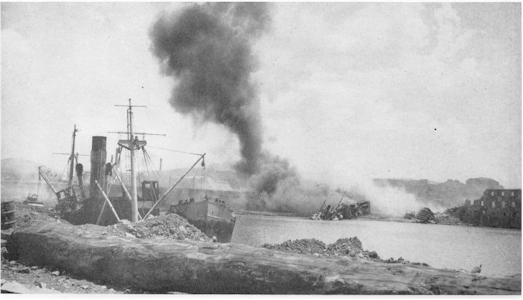
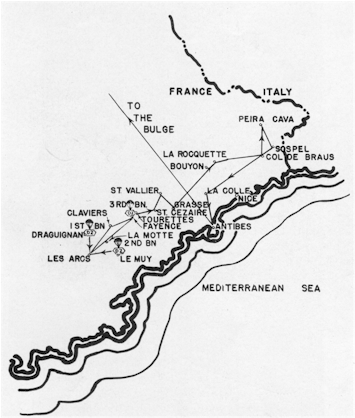 All elements of the
517th were relieved the morning of June 26 by the 442nd Japanese-American combat
team. The Regiment had become in the short space of a week a group of seasoned
veterans, and they were pulled back to the area of Frascati on the outskirts of
Rome to prepare for the invasion of Southern France.
All elements of the
517th were relieved the morning of June 26 by the 442nd Japanese-American combat
team. The Regiment had become in the short space of a week a group of seasoned
veterans, and they were pulled back to the area of Frascati on the outskirts of
Rome to prepare for the invasion of Southern France.
The month of July was a pleasant break in the realities of war. While training was carried on and supplies of new equipment were issued, there was plenty of time for relaxation. PX rations were distributed, USO shows arrived, athletic tournaments were held, and a constant stream of Troopers ebbed and flowed through the Eternal City . . .
By the middle of August, plans had been completed for the next operation, which was to be the invasion of Southern France. The 517th moved to marshalling areas at air ports to the north of Rome. The preparations and briefing were over all too soon. Chutes were drawn, the men loaded into C-47s, and in the early morning hours of August 15th, the Regiment took off and was on its way toward the goal of every Paratrooper, an Airborne spearhead for an attacking army.
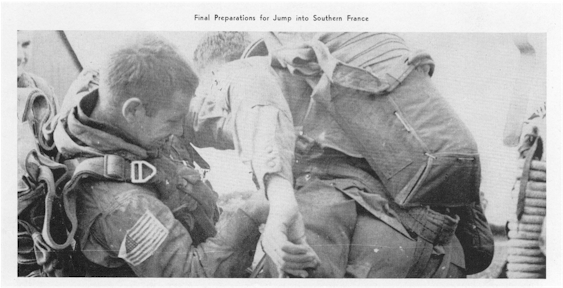
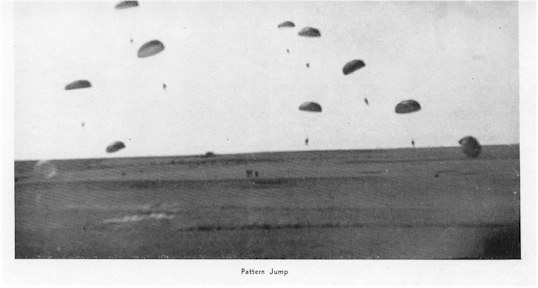
At 0430 hours the sky over Le Muy, France filled with chutes and the attack was under way. The action throughout the next three days threw the Germans into a state of chaos. Enemy convoys were attacked, communication lines were severed, and towns and villages were occupied as the Troopers fought toward their objectives. Le Muy, La Moue, Les Arcs, and Draguignan became names to be remembered. Part of Lt. Colonel Zais' Third Battalion assembled and proceeded to Claviers shattering enemy installations as they went. Remaining elements of the Battalion had landed in the hills east of Tourettes, were joined by British Paratroopers, combined forces, and annihilated a large enemy convoy speeding reinforcements to cities in the South.
Lt. Colonel Boyle and forty men of his First Battalion made a gallant stand at Les Arcs. The Second Battalion pushed through to reinforce them as the Germans began massing their troops on the outskirts of Les Arcs for an all-out counter attack. The Third Battalion arrived on the scene, the Regiment consolidated, and attacked, overcoming the German positions. Thus the way was cleared for the beach head forces to push on through toward the North.
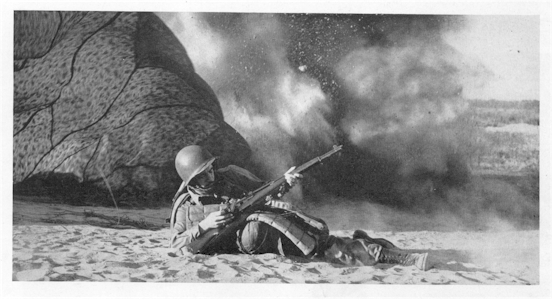
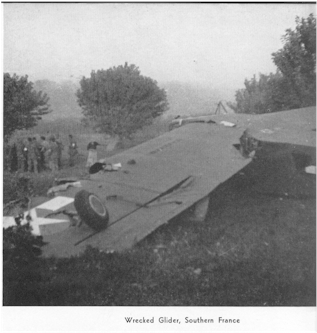 On D plus 4, after
the reorganization of the combat team near Chateau St. Rosseline, the Second
Battalion was charged with the taking of Fayence, and the Third Battalion
started in to Callian. The First Battalion was held in reserve, and other units
used in direct support of these missions. The morning of the 21st saw both of
these objectives taken, St. Cezaire fell to "G" and "I" Companies on the morning
of the 22nd of August when, after "G" Company had become pinned down, Company"
"I" surged through heavy fire up mountainous slopes to take the town, thus
earning a commendation from Major General Robert T. Frederick, Commanding
General of the First Airborne Task Force. St. Vallier , Grasse, Bouyon, and La
Rocquette fell in quick succession to the rapidly moving 517th within the next
two weeks. In the attack on La Rocquette, "E" Company distinguished itself and
also earned a commendation from the Commanding General. The combat team's
momentum in the late summer was stalled by a line of enemy fortifications
extending from the Maritime Alps in Southern France to the Sea. The Germans
attempted to hold the French constructed forts at all costs, but on September
5th, "D" Company attacked through them and succeeded in taking the high ground
north of Col de Braus while under heavy fire. After terrific fighting, "G" and
"H" Companies finally succeeded in. taking Col de Braus, a step toward the
heavily defended Sospel Valley .The same day the First Battalion supported by a
battery of the 460th Parachute Field Artillery Battalion pressed into Piera
Cava. The red letter day of the "Champagne Campaign" was September 18th when
Ventebren and Tete de Lavina Viere taken by the Second and Third Battalions with
a total cost of only four casualties.
On D plus 4, after
the reorganization of the combat team near Chateau St. Rosseline, the Second
Battalion was charged with the taking of Fayence, and the Third Battalion
started in to Callian. The First Battalion was held in reserve, and other units
used in direct support of these missions. The morning of the 21st saw both of
these objectives taken, St. Cezaire fell to "G" and "I" Companies on the morning
of the 22nd of August when, after "G" Company had become pinned down, Company"
"I" surged through heavy fire up mountainous slopes to take the town, thus
earning a commendation from Major General Robert T. Frederick, Commanding
General of the First Airborne Task Force. St. Vallier , Grasse, Bouyon, and La
Rocquette fell in quick succession to the rapidly moving 517th within the next
two weeks. In the attack on La Rocquette, "E" Company distinguished itself and
also earned a commendation from the Commanding General. The combat team's
momentum in the late summer was stalled by a line of enemy fortifications
extending from the Maritime Alps in Southern France to the Sea. The Germans
attempted to hold the French constructed forts at all costs, but on September
5th, "D" Company attacked through them and succeeded in taking the high ground
north of Col de Braus while under heavy fire. After terrific fighting, "G" and
"H" Companies finally succeeded in. taking Col de Braus, a step toward the
heavily defended Sospel Valley .The same day the First Battalion supported by a
battery of the 460th Parachute Field Artillery Battalion pressed into Piera
Cava. The red letter day of the "Champagne Campaign" was September 18th when
Ventebren and Tete de Lavina Viere taken by the Second and Third Battalions with
a total cost of only four casualties.
The remainder of September was spent by the 517th digging defensive positions in and around Piera Cava along a thinly held fifteen mile front, using mines and booby traps to take the place of Troopers, of which there were far too few. Attacks on hill 1098 ended the month with the roar of artillery duels echoing through the valleys of the Maritime Alps. The one respite from the horrors of war during the siege of Sospel, was Nice. Men were called from the front lines and given passes to share the rewards of liberation, and walk with the belles of Cote d' Azur. The next day they would be back in the lines. and the rigors of war, with the hope that another pass would come in time.
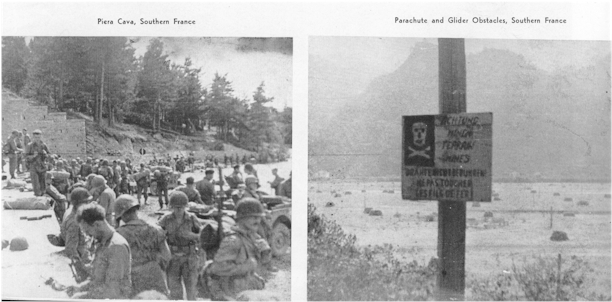
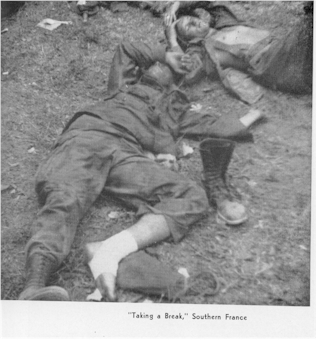 Despite heavy
artillery, on the 29th of October a large patrol from "F" Company pushed into
Sospel. The Germans withdrew, and "B" Company moved up through the village to
push on and occupy Mt. Agaisen, without opposition later the same day. The siege
of Sospel was over after fifty-one days of continuous fighting and the combat
team fanned out over the valley to the front in pursuit of the enemy. . The
battle was terminated on the 17th of November. It was called the "Champagne
Campaign," but for the men who were doing the fighting there was no semblance of
gaiety and only a succession of tortuous days and nights under fire.
Despite heavy
artillery, on the 29th of October a large patrol from "F" Company pushed into
Sospel. The Germans withdrew, and "B" Company moved up through the village to
push on and occupy Mt. Agaisen, without opposition later the same day. The siege
of Sospel was over after fifty-one days of continuous fighting and the combat
team fanned out over the valley to the front in pursuit of the enemy. . The
battle was terminated on the 17th of November. It was called the "Champagne
Campaign," but for the men who were doing the fighting there was no semblance of
gaiety and only a succession of tortuous days and nights under fire.
The Regiment marched forty-eight kilometers over the mountain and down into the sunny Riviera 'near Nice. During the next three weeks the men tried to make up for all the things that make life enjoyable, and had been all but forgotten during the days of combat. The Promenade des Anglais, the Avenue de la Victoire, the Place Massena, and the pleasure spots of night life, Queens, Maxim's, and Christie's became as familiar as the main streets and back yards at home. On the 6th and 7th of December the combat team .moved from La Colle to entrain at Antibes. The men and baggage were crowded into small 40 and 8's with a destination of Soissons, a famous battle ground of World War I. The slow, uneventful trip ended on the morning of the 12th, and the column filed through the still sleeping town to be greeted by the welcome sight of barracks for the first time overseas. The holiday season was near, and plans were being made for a gala Christmas, when Von Rundstedt started his break through, and changed visions of turkey to trenches. The 517th was alerted and two days later sped northward. Worried clusters of Belgians stood on street corners in threatened Namur as the column of Troopers rushed through enroute to the front on the 22nd of December. Orders were given directing the First Battalion to the Third Armored Division sector near Soy, Belgium where pressure from German armor made the situation so fluid that it was impossible to tell exactly where the front began. Major General Maurice Rose, Commanding General of the Third Armored Division personally attached "C" Company of the First Battalion to his Task Force Kane. This unit alone held the key point on which the western front hinged just prior to Christmas 1944.
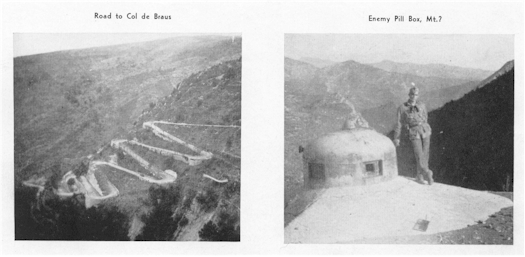
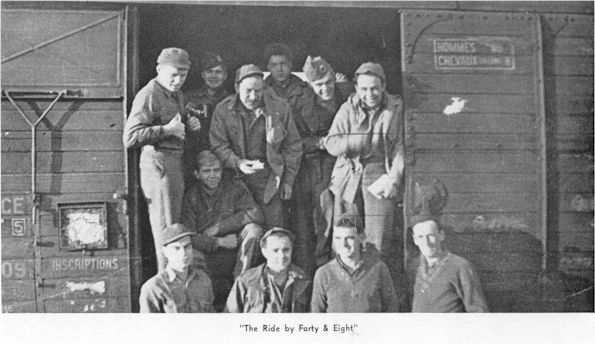
The rest of the First Battalion, commanded by Lieutenant Colonel Boyle, detrucked northeast of Soy, and was immediately ordered to attack along the highway leading from Soy to Hotton. The situation was so critical that no rest could be allowed for the troops even though they had just completed a twenty-three hour trip. The missions of the Battalion were to take the commanding ground around the road junction at Raids Hits, where the Germans were well dug in, capture the high ground at Sou-Les-Rys, and break through to the surrounded Third Armored Division garrison at Hotton.
Company "B" led the attack but, due to the heavy fire encountered from automatic weapons and tanks, it became necessary for " A " Company to by pass the original route to Hotton. While this maneuver saved casualties, it was necessary to fight for every foot gained along the entire route.
On the return from Hotton to Soy, the fighting was as severe as on the trip in. However, the mission was so well executed despite the fanatical enemy resistance, that the First Battalion is to be awarded the Presidential Unit Citation for the action.
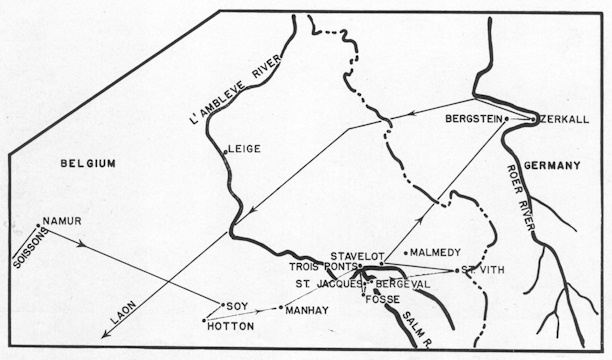
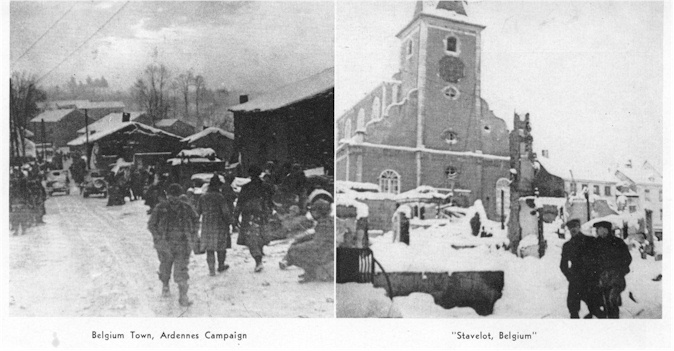
The morning of the 25th broke bright and clear and as the men celebrated the day in fox holes with a cold "K" ration for dinner one of the greatest aerial engagements of the war was fought overhead.
The next day the 517th received one of its most important assignments when ordered by the XVIII Airborne Corps to take Manhay at any Costs. Manhay had been reclaimed by the Second SS Panzers, the unit responsible for the atrocities at Malmedy earlier in the Break Through, and its recapture was important because the little Belgian town contained a Junction of five roads, and commanded the all important highway through Werbemont to Liege. It was a crucial sector that the enemy needed to launch its attack toward a city that must be held, Liege.
The task of leading the attack into Manhay was given to the Third Battalion, commanded by Lieutenant Colonel Paxton. The twenty-five minute barrage from fifteen supporting artillery Battalions shattered the enemy defenses, enabling the Paratroopers to take it with little opposition. An enemy counter attack supported by tanks began almost immediately but was driven off within an hour, and the village secured. It was in Manhay that Rundstedt's drive was halted, and his hopes for a quick thrust north-ward were frustrated.


On January 3rd, the 5l7th acting as the left flank regiment of the 82nd Airborne Division struck south along the Salm River. The 55lst Parachute Infantry Battalion on the right, fought through Basse Bodeux, and the Second Battalion of the 5l7th took Trois Ponts, advancing toward Monte de Fosse where they were held up by heavy enemy fire. At 2400 hours the First Battalion, commanded by Lieutenant Colonel Boyle, of the 517th, moved up through the area already taken to St. Jacque~ and Bergeval seizing the towns.
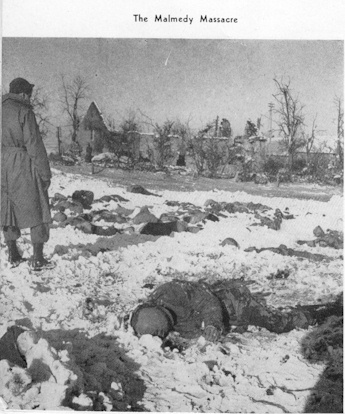 On the 5th of January the Third Battalion pushed on across the
Salm River to the east. In the meantime Major Robert E. McMahon had succeeded
Lieutenant Colonel Boyle who had been wounded near Bergeval.
On the 5th of January the Third Battalion pushed on across the
Salm River to the east. In the meantime Major Robert E. McMahon had succeeded
Lieutenant Colonel Boyle who had been wounded near Bergeval.
The Regiment, less the 2nd Battalion, was attached to the l06th Division for the attack across the L'Ambleve River, between Stavelot and Trois Ponts. Henumont, I.ogbierme, and Poteaux soon fell despite determined enemy resistance, and the fight ended with the 517th attached to the 30th Infantry Division. The Second Battalion, commanded by Lieutenant Colonel Richard J . Seitz, plunged into the defenses of St. Vith with elements of the 7th Armored Division. With the capturing of this city, the Germans last foothold in the Ardennes was wiped out. Soon after the victory at St. Vith, the combat team moved to Stavelot and was billeted there for a short rest. For the first time in many weeks the Troopers slept in beds instead of fox holes and had roofs over their heads. Time was taken for thawing out and eating the meals that had never arrived when they were most needed.
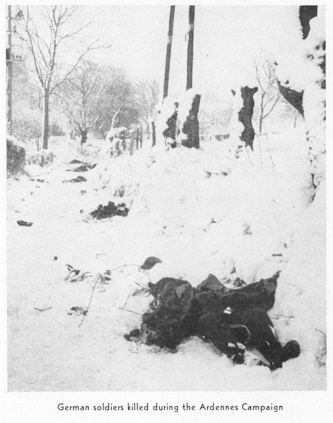 On the 4th of
February Colonel Graves received orders to move the 517th from Stavelot to
Germany, and to join the 82nd Airborne Division near Honfeld and Hesheim. Two
days later, the Regiment was attached to the 78th Division. The column moved out
by truck convoy, and within a few hours had passed the idle tank traps and
shattered pill boxes of the Siegfried Line into Rotgen, and through the Hurtgen
Forest en route to Bergstein.
On the 4th of
February Colonel Graves received orders to move the 517th from Stavelot to
Germany, and to join the 82nd Airborne Division near Honfeld and Hesheim. Two
days later, the Regiment was attached to the 78th Division. The column moved out
by truck convoy, and within a few hours had passed the idle tank traps and
shattered pill boxes of the Siegfried Line into Rotgen, and through the Hurtgen
Forest en route to Bergstein.
The Second and Third Battalions moved out of Bergstein at 2400 hours of the 6th against a high ridge east of the Roer River defended by the German First Parachute Army. The 517th's mission was to occupy this ridge cutting off the enemy's escape route from Schmidt.

Numerous obstacles had been thrown up to prevent the crossing of the river and to help repel attacks. The Germans had had six weeks in which to prepare their positions and had made the most of them by building reinforced cement emplacements, and laying one of the largest mine fields ever seen in Europe. The 596th Parachute Engineers worked heroically while under heavy artillery fire removing the mines, and clearing a path for the 517th.
The battle grew in intensity and by twilight of the second day had reached a violent pitch. An artillery duel was being waged by both sides with the men in the fox holes always on the receiving end. The cross roads that had ,been in an insignificant sector turned, over night, into the most hotly contested area on the western front. The attack continued with "A" Company assaulting Zerkall and on the 8th, the Second Battalion cut through a net work of trip wires to push almost to the river where mortar and small arms fire halted their advance.
The Regiment kept up continuous pressure against enemy positions and fulfilled their slogan "ATTACK" up till the last moment when they were relieved by the 508th Parachute Infantry on the morning of February 8th. The 517th pulled back out of the lines to Laon and then again by "40 and 8" moved to Joigny, where they became officially assigned to the 13th Airborne Division, commanded by Major General Elbridge G. Chapman, Jr., on I March 1945. This Division had only recently arrived overseas and was eager to be given the chance to prove itself in combat, so once again the 517th started
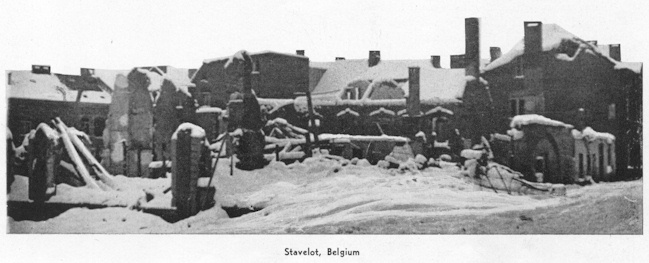
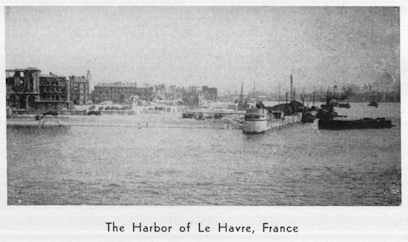
preparing and training for its next mission. The training period for the Regiment during the next few weeks was actually one of relaxation after the trials of warfare. Anything the men didn't find in the way of amusement in Joigny could be found in Paris where the fondest dreams became realities. Any night of the week men of the 5l7th could be found strolling down the Champs Elysees or in the Montemartre at one of the far famed night clubs. Numerous side walk cafes kept life from becoming dull and the Mademoiselles were always willing to brighten the Troopers stay.

The advancing American armies crossed the Rhine in March and
once again the 517th was alerted. The Regiment moved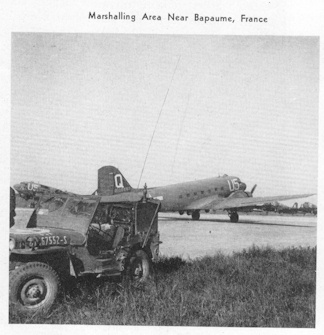 to a marshalling area near Bapaume at air field B-S4. Missions were assigned to
jump into areas ahead of the forces spear heading the American attack. Briefing
was completed and final preparations made, but at the last minute friendly units
overran the drop zones and the missions were canceled. This happened three
times before the surrender of Germany. The last hope for another Airborne
mission in Europe died with the fall of Germany and the Regiment pulled back to Joigny early in June.
to a marshalling area near Bapaume at air field B-S4. Missions were assigned to
jump into areas ahead of the forces spear heading the American attack. Briefing
was completed and final preparations made, but at the last minute friendly units
overran the drop zones and the missions were canceled. This happened three
times before the surrender of Germany. The last hope for another Airborne
mission in Europe died with the fall of Germany and the Regiment pulled back to Joigny early in June.
The main effort of American forces switched to the Asiatic Theater where Allied Armies were making an all out bid for an early victory. The 13th Airborne Division was alerted for overseas shipment and the 517th packed its equipment for what was to be the last move. The move was made to Camp Pittsburgh, then to Camp Philip Morris, and on to Le Havre, the port of embarkation. Here the Regiment was divided into two groups one boarding the U. S. S. ONEIDA VICTORY and the other the U. S. S. MADAWASKA VICTORY, both ships sailing by 14th of August 1945. Two days out from Le Havre hostilities with the Japanese ceased, and because of this, redeployment orders to the South Pacific were later to be canceled.

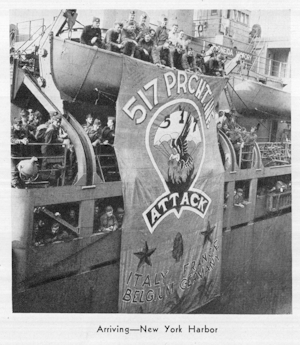

Both ships arrived in New York City by the 22nd of August, and the Regiment moved to Camp Shanks for processing. All members of the Command were given forty-five day furloughs, men with enough points were given discharges, and the few that were left reported to Fort Bragg, North Carolina to pass on to the new men who were to refill the ranks of the depleted regiment, the lessons they had learned in war.
The cycle of war for the 517th Parachute Infantry Regiment had been completed. It had gone from training to combat overseas, and back to training in the States. Its mission had been completed and it could now enjoy the fruits of victory till some time in the future, when once again its men may be called on to uphold the traditions it has established.
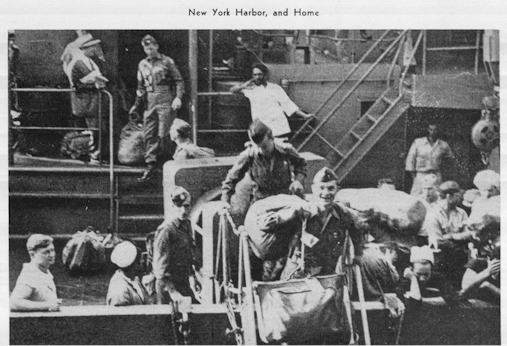
The Men...
(to be continued)
![]()